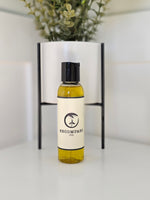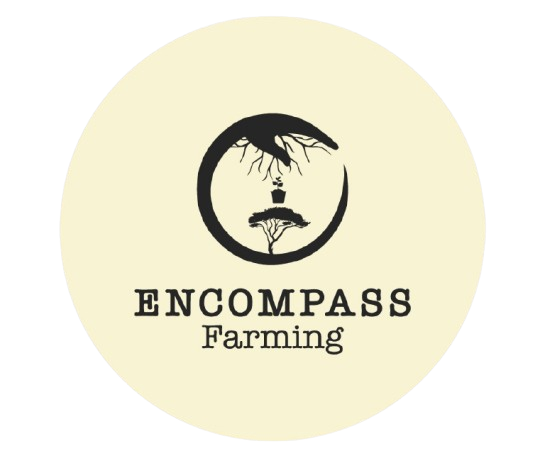
What You Need to Know About Lip Balm?
Share
What You Need to Know About Lip Balm
Our lips are one of the most expressive parts of our face—and one of the most delicate. Unlike the rest of our skin, our lips don’t have oil glands or much natural protection.
That means they’re quick to dry out, crack, or become irritated, especially in dry air or cold weather. This is where lip balm steps in, offering that much-needed layer of moisture and protection.
But not all lip balms are created equal, and understanding what’s inside that tiny tube can make all the difference between soft, healthy lips and constant reapplication frustration.
In this guide, we’ll explore what lip balm actually does, what to look for in a good one, what ingredients to avoid, and how natural alternatives—like Encompass Farming’s olive oil and Shea Butter blends—offer lasting nourishment without the synthetic additives.
What Is Lip Balm, and How Does It Work?
At its core, lip balm is a blend of waxes, oils, and butters designed to moisturize and protect the lips. Because the skin on your lips lacks sebaceous (oil) glands, it relies on outside sources to stay hydrated. Lip balm works by forming a protective layer that seals in moisture while shielding the lips from external irritants like cold wind, UV rays, or pollutants.
Most balms use a combination of three key types of ingredients:
Occlusives, which create a barrier to lock in moisture (like beeswax or petrolatum).
Emollients, which soften and smooth the skin (like shea butter, tallow, or coconut oil).
Humectants, which attract water to the surface of the skin (like glycerin or honey).
A well-formulated lip balm balances all three, leaving your lips soft and hydrated without feeling sticky or greasy.
The Ingredients That Truly Nourish
When you’re choosing a lip balm, ingredients matter. Some components offer deep hydration and healing, while others can actually dry your lips out over time. Let’s take a closer look at what’s worth keeping—and what to avoid.
Ingredients to Look For
Natural, nutrient-dense ingredients like beeswax, shea butter, cocoa butter, and plant oils (such as coconut, olive, or jojoba) are excellent for hydration. These ingredients mimic the skin’s natural sebum, allowing them to absorb easily without clogging pores.
Animal-based moisturizers like tallow or lanolin also work beautifully. Tallow, in particular, shares a similar fatty acid profile with our skin, making it one of the most compatible natural moisturizers. It’s rich in vitamins A, D, E, and K—nutrients essential for healthy skin cell function.
For extra nourishment, natural balms sometimes include vitamin E, calendula extract, or essential oils for mild scent and antioxidant benefits.
Ingredients to Avoid
Unfortunately, not all lip balms are as wholesome as they appear. Many popular products include menthol, camphor, or phenol, which may give an instant cooling sensation but often cause irritation or even dryness over time. Synthetic fragrances and artificial flavors can also trigger allergic reactions.
Recent lab testing has revealed another hidden concern: PFAS, or “forever chemicals,” found in some mainstream beauty products, including lip balms. These chemicals don’t break down easily and can accumulate in the body, so it’s wise to choose products made with transparent, natural ingredient lists.
Natural vs. Petroleum-Based Lip Balms
For decades, petroleum jelly was the go-to lip care ingredient. Dermatologists still recommend it for severely cracked lips because it’s an excellent occlusive that seals in moisture. But for daily use, many people prefer natural alternatives that provide the same protection while allowing the skin to breathe.
Plant-based and animal-based ingredients like beeswax, shea butter, and olive oil offer deep hydration without synthetic additives. These ingredients not only lock in moisture but also feed the skin with essential vitamins and fatty acids.
At Encompass Farming, we believe in using ingredients that your body already understands—those that work with your skin, not against it. That’s why our handcrafted lip and skin care products use oils, tallow, and botanicals sourced directly from nature.
The Problem With “Lip Balm Addiction”
Have you ever felt like you can’t go an hour without reapplying lip balm? You’re not alone. Many people experience what’s often called “lip balm addiction.” This happens when certain ingredients—usually menthol, camphor, or artificial flavors—temporarily soothe the lips but ultimately strip away natural moisture.
Your lips become trapped in a cycle of dryness and dependence. To break it, switch to a simple, fragrance-free balm made with real fats and oils, and let your lips naturally rebalance over a few days. You’ll quickly notice less flaking and fewer reapplications needed.
DIY: How to Make Your Own Tallow + Jojoba Lip Balm
If you love knowing exactly what’s going on your skin, making your own lip balm is easier than you might think. With just a few natural ingredients, you can create a deeply moisturizing, long-lasting balm that feels luxurious.
Ingredients:
2 tablespoons grass-fed tallow
1 tablespoon organic jojoba oil
1 teaspoon beeswax pellets
(Optional) a few drops of lavender or peppermint essential oil for scent
Instructions:
Melt the tallow and beeswax gently using a double boiler.
Add jojoba oil and stir until combined.
Remove from heat and, if desired, mix in a few drops of essential oil.
Pour the mixture into small tins or lip balm tubes.
Let it cool and solidify.
This simple recipe creates a balm that’s rich, nourishing, and long-lasting. Both tallow and jojoba closely mimic human sebum, allowing them to sink in effortlessly while protecting against harsh weather.
When Lip Balm Makes Lips Worse
Ironically, some lip balms can make dryness worse over time. This usually happens when formulas include alcohol, strong fragrances, or acids that irritate the skin. If your lips burn, sting, or peel after applying a product, it’s time to stop using it.
Instead, use a plain, nutrient-rich balm or even a dab of pure tallow overnight. Drinking plenty of water and avoiding lip licking will also help prevent dryness from returning.
Beyond Lip Care — Other Uses for Lip Balm
A quality lip balm can multitask beyond just soothing chapped lips. Many people use it to:
Smooth dry cuticles
Tame flyaway hairs
Soften rough elbows or knuckles
Heal small patches of dry skin
Because the ingredients are skin-safe and nourishing, a natural balm—especially one made from tallow and botanical oils—can become a versatile addition to your everyday care routine.
The Encompass Farming Approach to Lip Care
At Encompass Farming, our mission has always been simple: to create products “made by humans, for humans.” Based in Nebraska, we handcraft small batches of skincare and wellness products that honor the purity of nature and the tradition of slow, intentional farming.
Our Encompass Lip Balm is made with the same philosophy. Each ingredient—like grass-fed tallow, organic oils, and natural botanicals—is chosen for its purity and effectiveness, not for shelf appeal.
Instead of using synthetic waxes or artificial flavorings, our balms rely on real, farm-sourced fats that mirror your skin’s natural structure. This makes them more compatible, more nourishing, and more sustainable than industrial alternatives.
Whether you’re looking for an all-purpose moisturizer or a daily lip care essential, Encompass offers a return to simplicity—products that actually work, without unnecessary additives.
How to Use Lip Balm Effectively
Lip balm works best when applied strategically, not constantly. Use it:
Before going outside in cold or windy weather.
After meals or brushing your teeth.
Before bed, when your skin naturally repairs itself overnight.
Avoid licking your lips, as saliva evaporates quickly and worsens dryness. For overnight hydration, apply a thicker layer or use a balm with tallow or beeswax to seal in moisture while you sleep.
Frequently Asked Questions
What is lip balm made of?
Lip balm typically contains waxes, butters, and oils to hydrate and protect. Natural balms often use beeswax, shea butter, or tallow, while synthetic versions may include petroleum or silicone.
Is tallow balm good for lips?
Yes. Grass-fed tallow closely mimics the skin’s natural oils, making it excellent for soothing dry or cracked lips without clogging pores.
Can lip balm cause dryness?
Some balms with menthol, camphor, or alcohol can irritate the lips, leading to more dryness. Choose a simple formula with pure, moisturizing ingredients.
Can I use lip balm every day?
Absolutely. Just make sure it’s free from harsh additives, and use it when your lips actually need moisture rather than out of habit.
Is it safe to make lip balm at home?
Yes, as long as you use clean tools, safe natural ingredients, and store it properly. Homemade tallow and jojoba balm is both safe and deeply nourishing.
The Bottom Line
Lip balm may seem like a small detail in your daily routine, but it plays a big role in protecting one of the most delicate parts of your body. Understanding what’s in your balm—and choosing natural, nutrient-rich ingredients—can make all the difference in how your lips look and feel.
If you’re ready to move beyond synthetic ingredients and endless reapplication, explore Encompass Farming’s handcrafted lip and skincare products. Each one is made in Nebraska, thoughtfully created from pure, wholesome ingredients to restore your skin’s natural balance—one small batch at a time.



